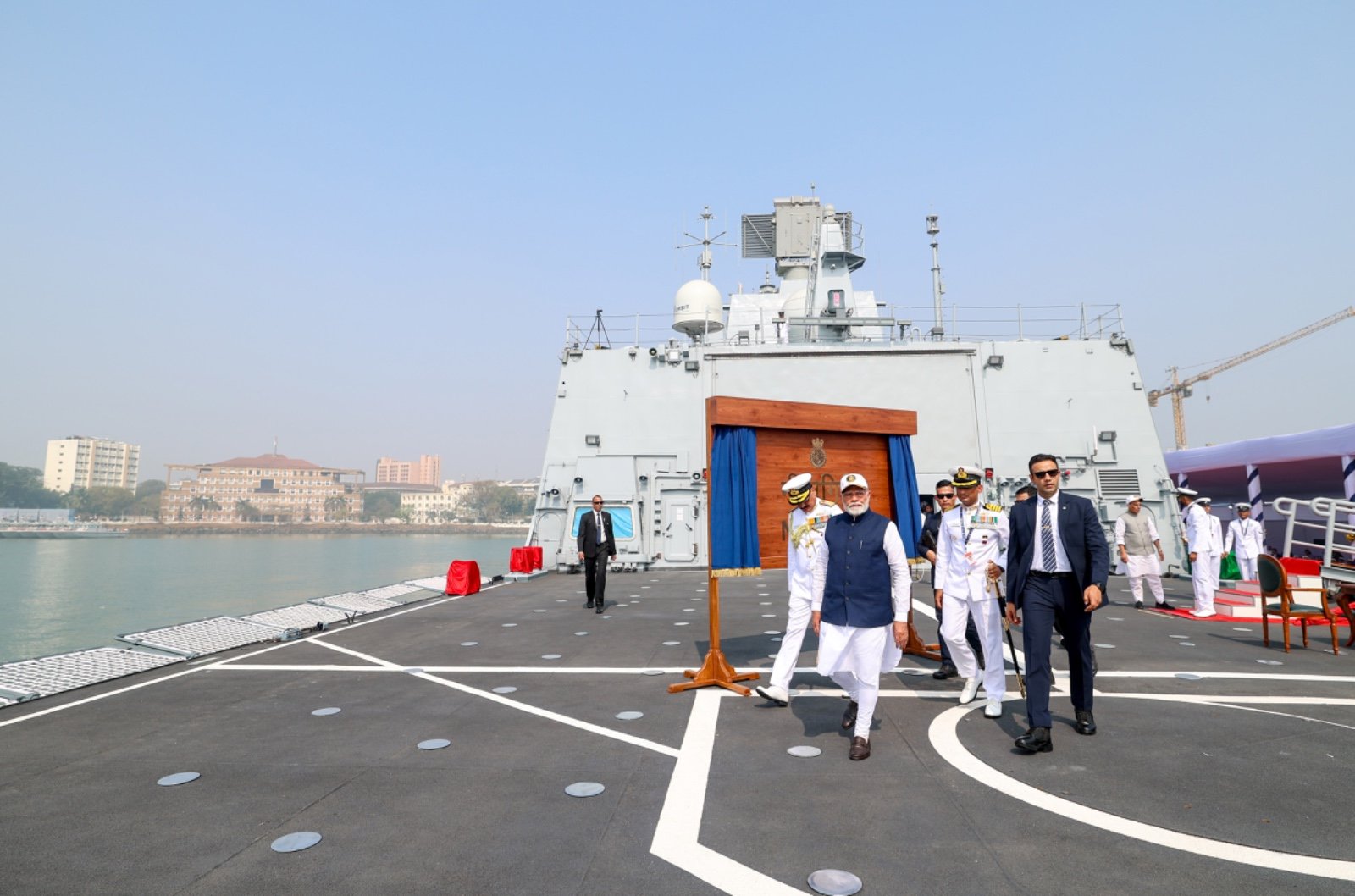India unveils trio of new warships in naval push

The Indian Navy’s new destroyer, frigate, and submarine form part of a pivot towards defence indigenisation.
The Indian Navy has commissioned three new frontline warships, as its defence industry pivots towards the government’s indigenisation strategy.
In a ceremony held on 15 January at the Naval Dockyard in Mumbai, Indian Prime Minister Narendra Modi said the vessels “underscore India’s unwavering commitment to building a robust and self-reliant defence sector”.
The three combatants are Project 15B-class destroyer INS Surat, Project 17A-class stealth frigate INS Nilgiri, and P75 Kalvari-class diesel-electric submarine INS Vaghsheer.
Modi added it was “the first time that the tri-commissioning of a destroyer, frigate, and submarine has been done”, and described it as a “memorable day” in a video on X. The Prime Minister also revealed that 60 other large vessels are currently under construction.
The Indian Navy comprises an estimated 135 warships on active service, with 33 ships and seven submarines commissioned in the last decade. Some projections say it will exceed 160 vessels by 2030.
The Indian Ministry of Defence had not responded to DSEI’s request for comment at the time of publication.
Analysis - Geopolitical tensions drive India’s defence indigenisation
Sandwiched by rivals Pakistan on its western border and China to the east, India has accelerated its rate of defence production on home soil in line with perceived geopolitical threats.
India and Pakistan continue to struggle for control over the Kashmir region, while there have been frequent clashes between Indian and Chinese troops along their shared – and disputed – 3,440km border. China is also playing an increasingly aggressive role in the Indian Ocean, and Pakistan’s Navy has ambitions to become a 50-ship force within the next decade.
Modi’s government has earmarked a defence budget of INR6.21 lakh crore (approximately USD75 billion) for the financial year 2024-25, a notable rise from last year’s INR5.94 lakh crore allocation.
This forms part of ‘Aatmanirbhar Bharat Abhiyan’, Modi’s ‘Make in India’ initiative which spans the defence, rail, construction and medical industries.
“More than 75% of the content of INS Surat and INS Nilgiri has been developed in India itself”, Indian Minister of Defence Rajnath Singh said at the naval commissioning. “Indigenous content is constantly increasing in other platforms being manufactured in the country”.
India remains the world’s top importer of weapons, with France its main supplier, followed by Russia, the US and Israel. The ongoing conflict in Ukraine means Russia has prioritised supplying its own forces, while US and European sanctions heap pressure on even non-aligned nations like India to not buy Russian equipment.
Alex Blair
